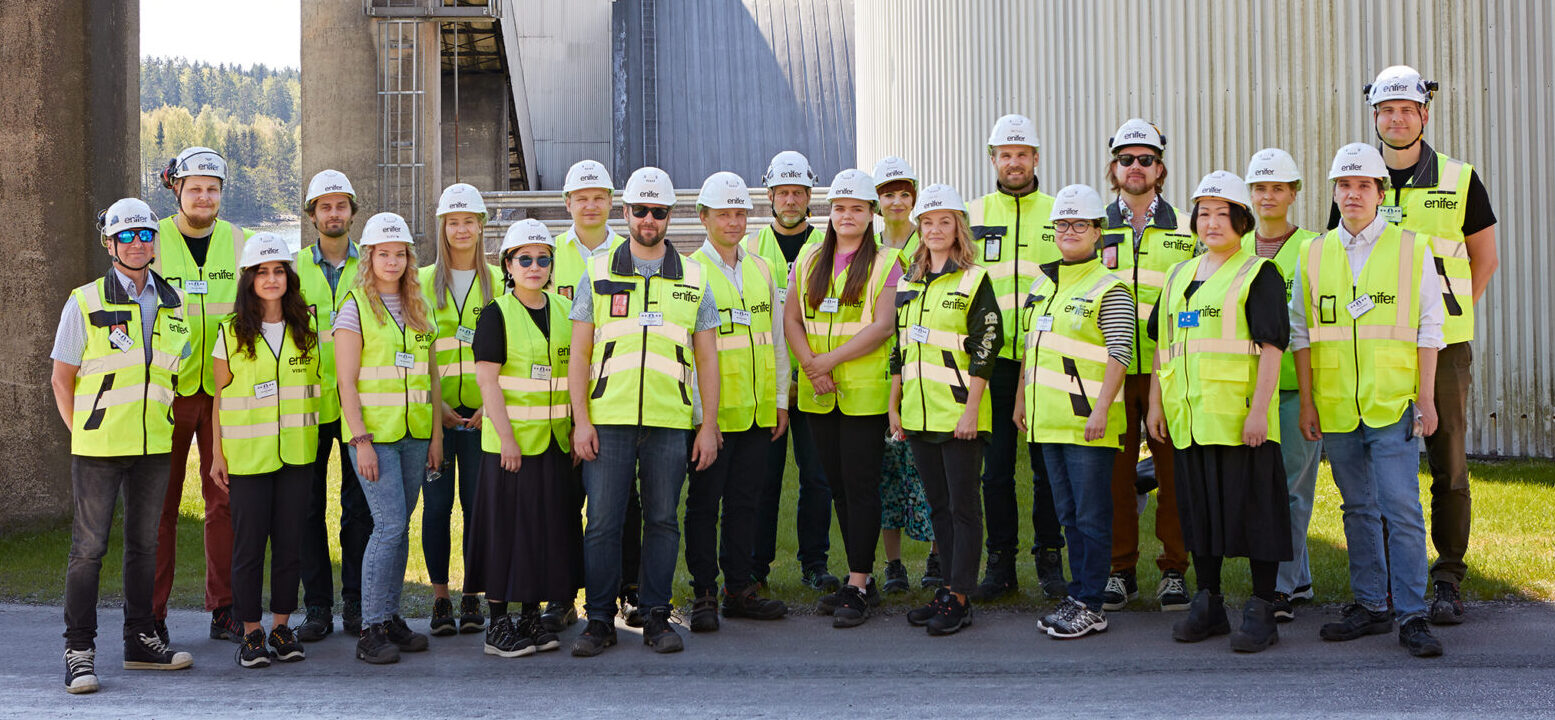Finnish startup Enifer is one of a flurry of new players growing mycoprotein via biomass fermentation. But what makes it stand out from the crowd?
For a start, its core product (brand name: PEKILO) has already been produced successfully at industrial scale, and can run off a variety of feedstocks aside from pure glucose, said cofounder and CEO Simo Ellilä, who caught up with AgFunderNews at the Future Food-Tech summit in London earlier this month.
“It’s a lot cheaper to use side stream byproducts as the carbon source, rather than pure glucose, but it’s also more environmentally sustainable.”
Aquaculture, pet food, human food…
PEKILO was in commercial production from 1975 to 1991 as a source of feed for pigs and chickens. It is produced by the fungal strain Paecilomyces variotii KCL-24, which was historically fed with spent sulfite liquor, a byproduct of paper making.
Enifer—which was spun out from the VTT Technical Research Centre of Finland in 2020—has upgraded the process to work with a broader range of feedstocks from molasses [a byproduct of sugar refining] to lactose permeate [a byproduct of dairy protein production]. It is currently building a factory in Kirkkonummi, Finland, that will be able to make up to 3,000 tons of PEKILO per year. The site is expected to be completed by the end of 2025 with production ramping up in 2026.
A protein- and fiber-rich powder with a neutral taste and color that can be shipped at room temperature, PEKILO will initially be targeted at pet food and aquaculture. This will be followed by human food applications from meat and dairy alternatives to snack bars, says the firm, which has just filed for Novel Food approval in Europe, said Ellilä. “We’re going to follow up with a Singapore application, and we’re also pursuing GRAS status in the US.”
He added: “We can reach high protein contents, higher than most other mycoproteins. The fiber is also fundamental and I think people are paying more attention to the fiber in mycoprotein, which is actually very beneficial for your health. We’ve seen that both in animals and humans. But our approach, fundamentally, is quite different from most other mycoprotein companies that provide a wet, fibrous product, whereas we provide a dry ingredient, which we would use much in the way soy protein or pea protein is used today.”

Partnerships with Skretting (Nutreco), Purina, and Valio
Over the past four years, said Ellilä, Enifer has “been learning a lot about our product and what the value proposition is in each segment, and we’ve been doing that with world-leading companies.
“In aquaculture, we have a strong partnership with Skretting [the aquafeed division of Nutreco]. They’ve done all the validations in salmon feed and they’ve really helped us understand how PEKILO behaves there.”
In pet food, he said, “Our main partner to date has been Purina. They did a wide set of tests in cats and dogs, and again, helped us understand the potential of our ingredient in that space.
“In [human] food, our main partner is Valio, the local dairy company [in Finland]. They’re also a minority shareholder in Enifer, and they’ve done a tremendous job in figuring out how to use PEKILO in the best possible way in a range of food applications.”
In human foods, he added, “We see greatest potential in substituting and complementing pea and soy protein concentrates and isolates. If you look at where those are used in kiloton scale, it’s mainly in alt meat. Alt dairy is also very promising. Thanks to its neutral taste and color PEKILO can also be used across the board to fortify products in baking, pasta, bread, cereals, and snack bars with protein and fiber.”
Does the world need more mycoprotein?
Asked whether the market can sustain all the new mycoprotein capacity given that the alt meat market in particular appears to be cooling off in some regions, he argued that not all players in the space are the same.
“We use side stream raw materials rather than dextrose as feedstocks, and our product doesn’t go through the cold chain. Plus Enifer is a pure b2b play making a dry ingredient that isn’t just a meat alternative, but a powder that can bring protein and fiber to a lot of applications that we’ve been actively testing with food industry partners.”
He added: “One area it works quite nicely in is dry extrusion, so we’ve tried it in breakfast cereals, pasta and all kinds of other products. Some of the other companies use glucose to grow fungal biomass, which they then sell wet through the cold chain as a chicken replacement, so they’re more locked into the alt meat market.”
Tech has ‘already been proven to work at scale’
But why did the original PELIKO operation shut down in the early 1990s if the market opportunity was so clear?
The acute reason was that the raw material from the pulp industry dried up, while the engineering company that built it went bankrupt, Ellilä told us.
“We ran the math and realized that if we wanted to revive this process, we couldn’t just do exactly the same thing. If we were going to make this profitable, we had to find higher margin markets, so we have tweaked the growing conditions and also the feedstock to make products suitable for human, pet, and aquafeed markets.”
While this is not the optimal time to raise capital, the fact that the PEKILO strain has been grown at industrial scale before has de-risked the enterprise for investors to some extent, such that Enifer can focus on the business case for the mycoprotein rather than having to prove its tech is scalable, he said.

Read the orginal article: https://agfundernews.com/%f0%9f%8e%a5enifer-ramps-up-mycoprotein-production-we-use-side-stream-raw-materials-rather-than-dextrose-as-feedstocks


